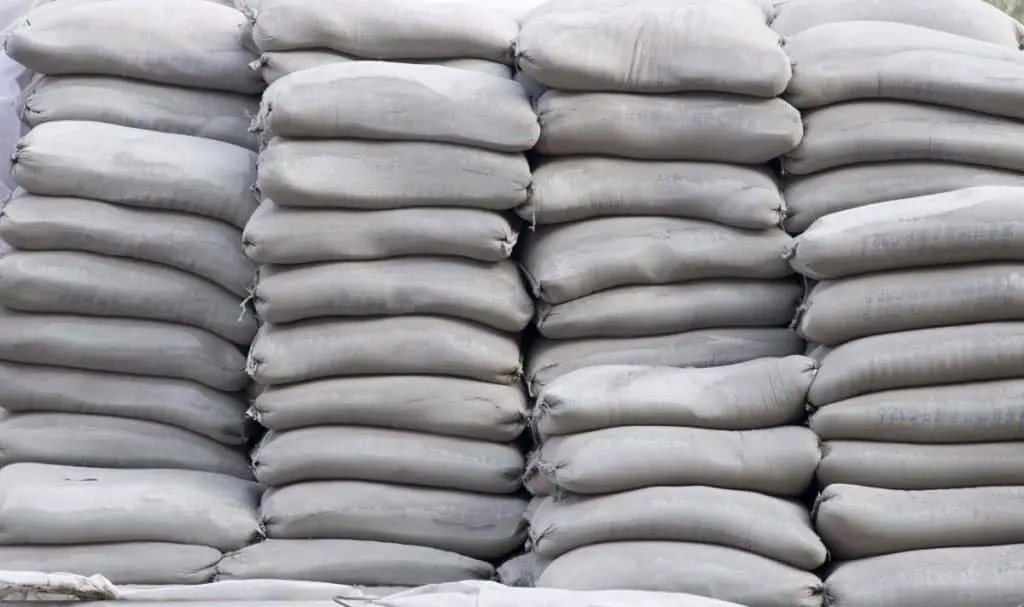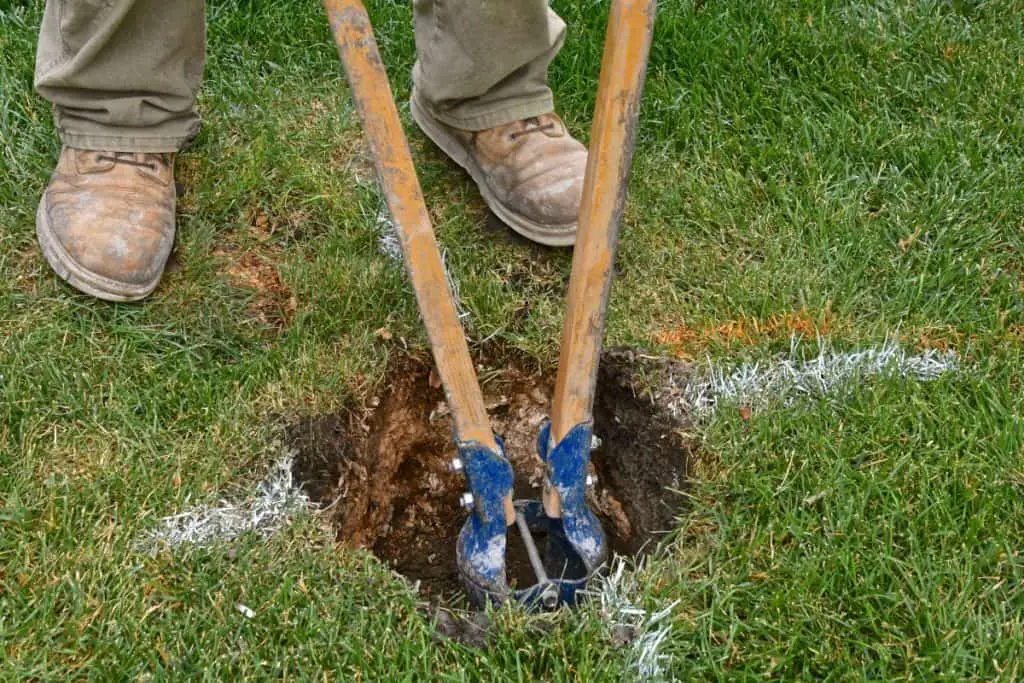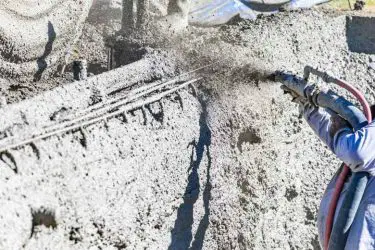Whether you’re remodeling your home, doing landscape work, or fencing in cattle, it’s important to have strong fence posts. Concrete bases are vital in ensuring your fence post won’t blow over in the wind or get knocked over by someone, so it is imperative that you know just how many bags of concrete you need for your fence post.
The average 6-foot tall 4×4 inch wide fence post requires two 50-pound bags of concrete. To know exactly how many bags you need, you should calculate for your hole to be a depth of ⅓ to ½ the height of your fence post with a diameter that is the width of your post times 3.
Read on for examples of how much concrete you need for fence posts of all sizes as well as calculations that will tell you whether you should hire a contractor for your fencing project or stick with the DIY option.

How Many Bags You Need
As mentioned above, the formula you need to figure out how many bags of concrete you need for your fence post is to calculate a depth of 1/3 to 1/2 the height of your fence post with a diameter that is 3x the width of your post.
In simpler terms, the formula for how much concrete you need is [height of fence post x 0.33-0.5 ft + width of fence post x 3].
This will give you the volume of your post hole, which in turn will tell you exactly how many bags of concrete you need.
Most concrete comes in bags that are anywhere from 10-80 pounds, but we will be using the same 50-pound bag example from earlier in the article.
Below is a table with calculations specifying how many bags of concrete you need for different depths of holes with different diameters of fence posts.
| Depth of hole in inches (1/2-1/3 post height) | # of bags for hole w/9 inch diameter (3″ post) | # of bags for hole w/12 inch diameter (4″ post) | # of bags for hole w/18 inch diameter (6″ post) |
|---|---|---|---|
| 10 inches | 1 bag | 2 bags | 4 bags |
| 12 inches | 1 bag | 2 bags | 4 bags |
| 14 inches | 2 bags | 2 bags | 5 bags |
| 16 inches | 2 bags | 3 bags | 5 bags |
| 18 inches | 2 bags | 3 bags | 6 bags |
| 20 inches | 2 bags | 3 bags | 6 bags |
| 22 inches | 2 bags | 3 bags | 7 bags |
| 24 inches | 2 bags | 4 bags | 7 bags |
| 26 inches | 2 bags | 4 bags | 8 bags |
| 28 inches | 3 bags | 4 bags | 9 bags |
| 30 inches | 3 bags | 4 bags | 10 bags |
| 32 inches | 3 bags | 5 bags | 10 bags |
| 34 inches | 3 bags | 5 bags | 10 bags |
| 36 inches | 3 bags | 5 bags | 11 bags |
Also Read: Best Concrete Mix for Fence Posts for Ultimate Strength
Contractor VS DIY
Knowing just how many 50-pound bags of concrete you need for your fencing project is useful if you choose to do it yourself, but that is not the only option.
If you do not feel up to digging posthole after posthole, mixing and pouring concrete, and setting fence posts yourself, you can always hire a contractor!
The biggest questions to answer when determining whether you want to hire someone for a project or DIY are:
- Can I DIY my project successfully?
- If yes, which option is cheaper?
- If DIY is cheaper, is saving the money worth the work?
Q: Can I DIY my project successfully?
A: Yes! Fences are some of the easiest DIY projects because of their straightforward nature. It is harder to mess up a simple fencing project than it is to mess up concrete stamping.
Also Read: How To Set a Post in Concrete Without Mixing
Q: Which option is cheaper?

A: If you DIY, a 50-pound bag of Quikrete concrete mix is $5.48 at Home Depot, renting a posthole digger is $9.00 per day. Water and labor are both free if you do it at home, so the overall cost is $10.96 per fence post with a daily $9.00 cost.
If you choose to hire a contractor, you can expect to pay $40-$150 per fence post.
Labor costs range $5-$15 per linear foot, and hourly hiring will be an extra $50-$70 on average.
Depending on the company, contractor, or handyman, you may have to buy your own materials. Some companies will provide them at an extra cost, so be sure to get quotes from your area to know how much you will be putting into this project.
Overall, the cost of a DIY project for 10 fence posts would be $118.60 and the cost of 10 posts done by a contractor would be about $900 on average.
Q: Is saving money doing a DIY fence worth the extra work?
A: To put it simply: yes.
If you have the time and physical strength to install your own fencing, that is surely the best option. You will save money and, in the long run, time because you will not need to worry about which companies fit your schedule.
Why Concrete Is Necessary
Mixing, digging, pouring, and waiting for concrete bases to dry around your fence posts may seem tedious and unnecessary, but it is very much the opposite.

Concrete foundations for your fence posts are the most beneficial thing you can do to ensure you will have a strong, durable, long-lasting fencing unit, wherever it may be.
Without concrete as a base, fence posts will shift from side to side, sink further into the ground, be easily knocked over by wind or people, and fall over without warning.
For these reasons and more, your fence must be secured with a strong base, like concrete. But, today there are great alternatives.
As I wrote in the article ‘Best Concrete Mix for Fence Posts for Ultimate Strength‘, there are easier ways of installing fence posts, without the need for concrete. Be sure to check it out, especially if you’re a beginner and want the quickest and easiest way of installing fence posts.



